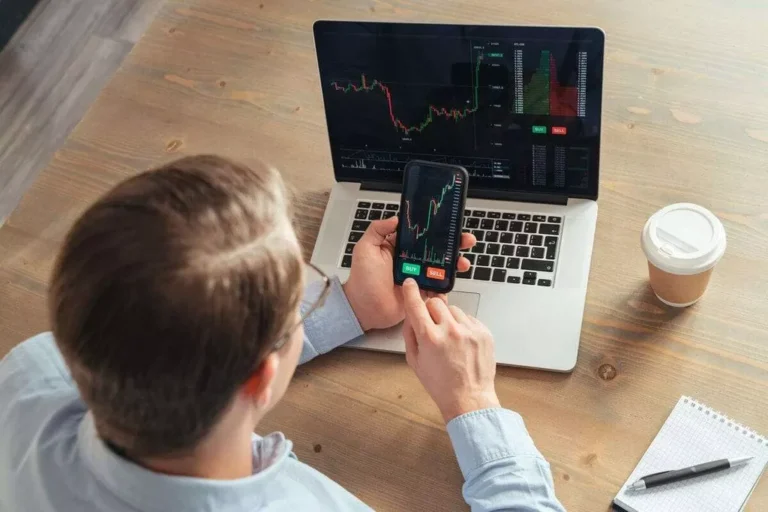Algorithmic trading to execute trades
Content
In order to open and execute trades based on pre-programmed code, algorithmic trading combines financial markets with computer software. It is up to traders and investors to decide when they want deals to open or close. The quality of your strategy and your risk management ultimately determines your what is algorithmic trading example success. The trader no longer needs to monitor live prices and graphs or put in the orders manually.
CFD trading: What is it and how does it work?
These key mechanisms empower stock trading algorithms to operate effectively in dynamic financial markets, facilitating rapid decision-making and execution. For example, a trader needs to write code that can analyse large datasets in Initial exchange offering real-time, identify trading opportunities, and execute trades automatically. Did you know that over 70% of all trades in the U.S. stock market are executed by algorithms? This staggering statistic highlights the growing dominance of algorithmic trading in financial markets worldwide.
What Are the Technical Requirements for Algorithmic Trading?
It’s recommended to use paper trading (simulation) before implementing real money trades. Key risks include https://www.xcritical.com/ technical failures (hardware malfunctions, software bugs), connectivity issues, market impact problems (price slippage, poor fill rates), and execution delays. Understanding these risks is crucial for implementing effective risk management strategies. The two most popular strategies are trend-following and mean reversion.
Volume-weighted average price (VWAP)
You can do algorithmic trading with Python if you can write your own lines of code. A subset of algorithmic trading, high-frequency trading takes the concept to the extreme. HFT firms compete to place orders in microseconds—millionths of a second—using ultra-sophisticated technology, co-located servers next to exchange data centers, and direct market access. Their profits come from minuscule price discrepancies captured repeatedly at tremendous speed and scale. Traditionally, algorithmic trading has been the domain of large financial institutions, hedge funds, and proprietary trading firms. They leverage expensive technology and quantitative teams to gain even the slightest edges.
However, trading can be risky, and it is advised to consult a financial advisor before trading. In conclusion, algorithmic trading represents a transformative force in financial markets, offering unparalleled speed, efficiency, and scalability in executing trading strategies. Index funds have defined periods of rebalancing to bring their holdings to par with their respective benchmark indices.
The high degree of leverage that is often obtainable in options and futures trading may benefit you as well as conversely lead to large losses beyond your initial investment. Traders can control the algorithm by setting parameters regarding factors like price fluctuations and volatility levels. These parameters are then used by the algorithm in conjunction with computer codes and chart analysis to execute trades. This trading instrument is used because it is thought to be able to execute trades at an inhuman frequency, speed, and volume, thus increasing profits.
These strategies are based on market trends, economic theory, data, and price movements. They’re increasingly popular among traders, leading to more systematic and efficient trading within financial markets. A trader may decide to purchase a stock, for instance, if its 50-day moving average crosses over the 200-day moving average. Without requiring human involvement, the algorithmic trading system finds the trade opportunity and places the order automatically.
Then, you buy it at a lower price in one of the markets and sell it at a higher price in a different market—the price differential results in arbitrage (risk-free profit). Algorithmic trading can make this strategy profitable by quickly identifying opportunities and placing orders efficiently. It removes the risk of human error, reduces transaction costs, and can be very profitable. However, it can be a little daunting if you’re new to automated trading. Imagine a world where emotions don’t cloud your judgment and lightning-fast trades are executed with pinpoint precision. By using computers, algorithmic strategies eliminate human error and reaction time, thus increasing profits.

The algorithm buys when prices are unusually low and sells when they are high, expecting them to return to their average levels. Mean reversion strategies operate on the belief that prices will revert to their historical averages over time. This broad market access enhances trading opportunities and increases the potential for profit.
Some common pitfalls in algorithmic trading are overfitting and unrealistic results. You avoid them by creating simple trading strategies – not complex ones. Lastly, strategic thinking is essential for creating effective algorithmic trading strategies. You need to be able to plan, test, and implement your trading strategies systematically. You should aim for uncorrelated strategies that fit your existing strategies.
The algorithmic trading system does this automatically by correctly identifying the trading opportunity. The first strategy on the list that drives algo trading is trend identification. The codes help analyze market trends depending on the price, support, resistance, volume, and other factors influencing investment decisions.
Until the trade order is fully filled, this algorithm continues sending partial orders according to the defined participation ratio and according to the volume traded in the markets. The related “steps strategy” sends orders at a user-defined percentage of market volumes and increases or decreases this participation rate when the stock price reaches user-defined levels. Volume-weighted average price strategy breaks up a large order and releases dynamically determined smaller chunks of the order to the market using stock-specific historical volume profiles. The aim is to execute the order close to the volume-weighted average price (VWAP). A British trader was convicted of using “spoofing” algorithms, which create the illusion of demand to manipulate the market. The programme created a large number of selling orders of E-Mini S&P contracts to artificially push prices down, which led to the market plunge.
- Pocketful streamlines the creation and execution of algorithms for better efficiency and speed.
- Because the markets are always changing, you have to adapt, and so does your algo.
- Identifying and defining a price range and implementing an algorithm based on it allows trades to be placed automatically when the price of an asset breaks in and out of its defined range.
- This blog will explain algorithmic trading, popular strategies, its growing popularity, and its impact on the future of trading.
- Additionally, creating a comprehensive risk management framework ensures adaptability to market dynamics and informed decision-making.
- Index funds have defined periods of rebalancing to bring their holdings to par with their respective benchmark indices.
- A general election in the UK and financial issues in the Greek economy negatively affected markets, pushing equity and futures indices downwards.
It is the method that monitors the average highs and lows of a stock, helping investors decide whether to spend on a company’s stock or not. Based on the average fluctuations in the prices, the software determines the price that is most likely to drive the stocks at a particular trade. On the other hand, if the market prices fluctuate beyond the average level, such stocks are considered less trustworthy. HFT aims to generate profits by placing a high volume of orders and increased speeds, across multiple markets and based on multiple decision parameters. To ensure that their holdings are in line with their benchmark indices, index funds rebalance their portfolios at predetermined intervals. Algorithmic trading techniques execute these deals quickly and at the best possible price.
Trading algorithms automate market analysis and trade execution to deliver significant advantages over manual trading approaches. These automated systems transform complex trading tasks into streamlined operations with measurable outcomes. Overfitting your model to past data is a common pitfall; it performs well on historical data but poorly on new data. Another common pitfall is failing to account for market dynamics, which can make an algorithm unsuitable for different market conditions. The chosen time scale depends on factors like trading objectives, market conditions, and risk preferences. Algorithmic trading executes trades at lightning speed, enabling traders to capitalize on market opportunities in real time.

The value of your portfolio with Composer can go down as well as up. By using this website, you accept our Terms of Service, Privacy Policy, and Payment Agreement. Thomas J Catalano is a CFP and Registered Investment Adviser with the state of South Carolina, where he launched his own financial advisory firm in 2018. Thomas’ experience gives him expertise in a variety of areas including investments, retirement, insurance, and financial planning. An already fragile situation was compounded by a large number of trades in E-Mini S&P contracts and other high-frequency trades in futures that pushed indices to freefall.

No Comments